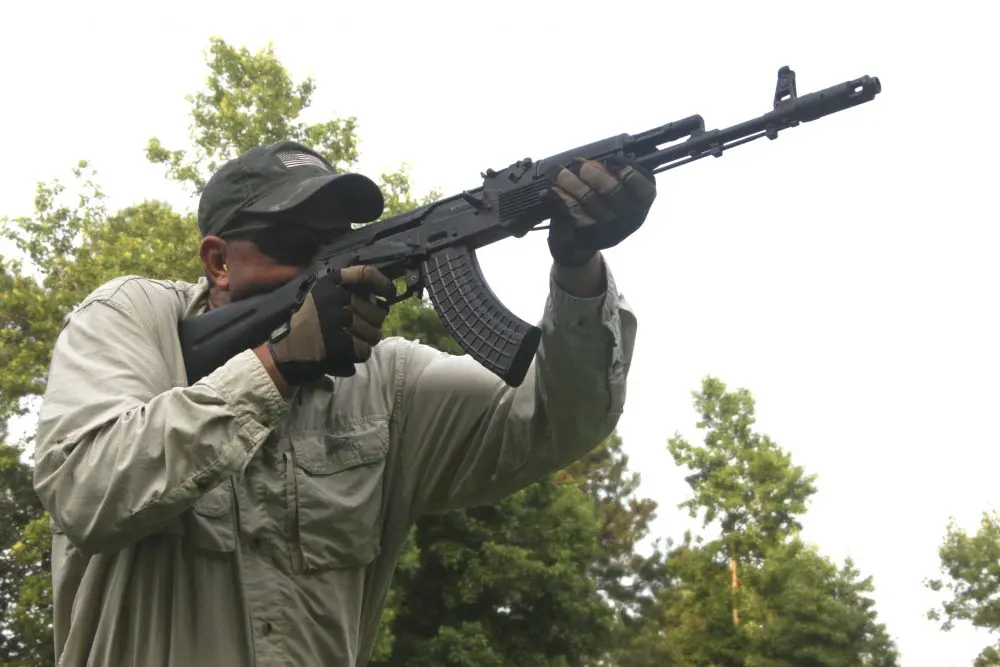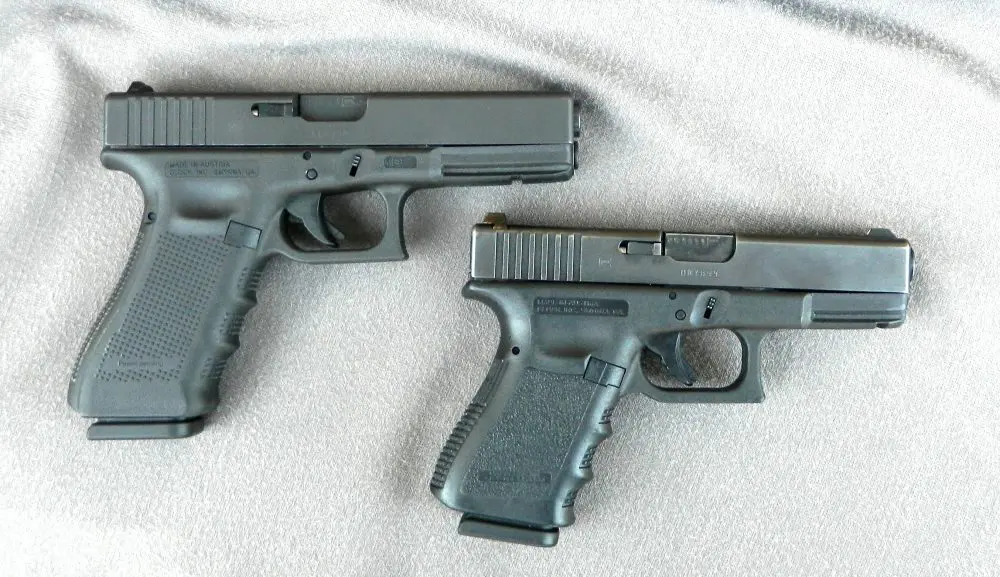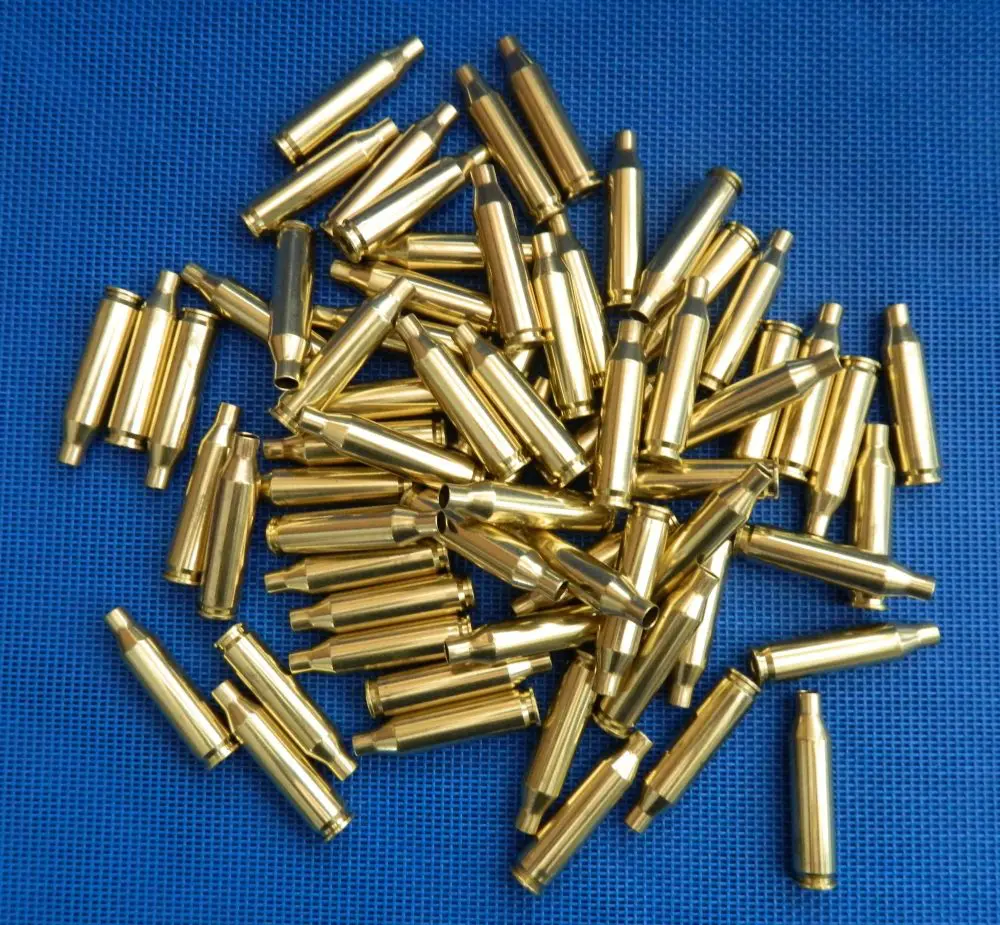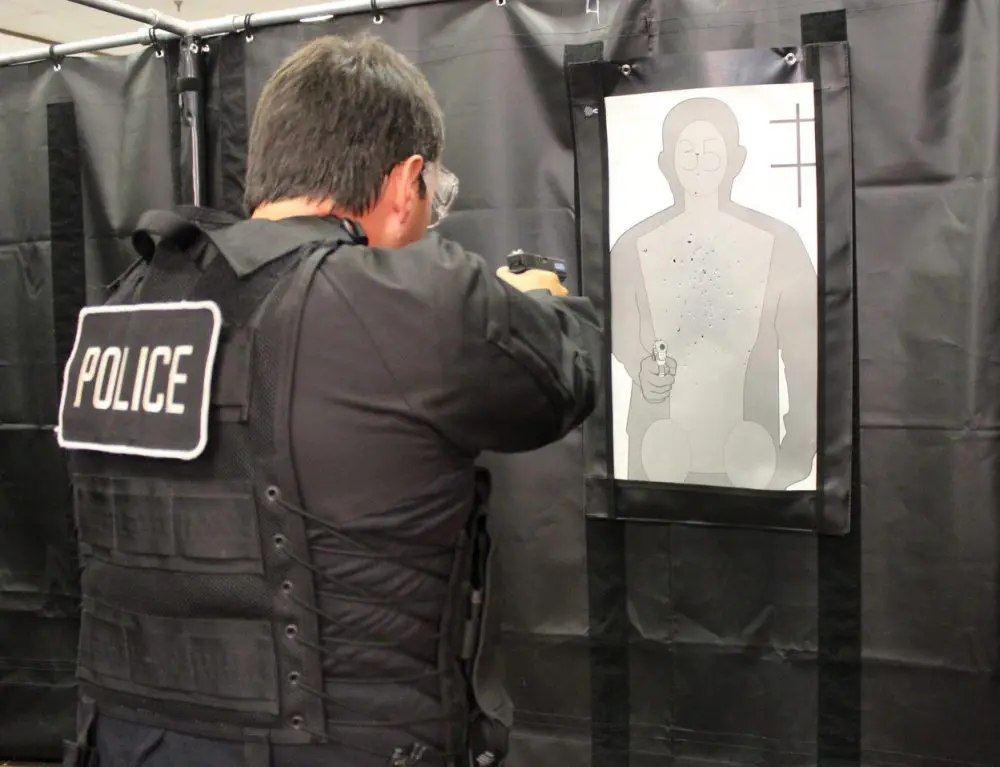The necessity of constant and consistent handgun practice cannot be overemphasized. These are perishable skill sets that deteriorate with time.
Take a 25-year-old fairly athletic male who yearns to be a body builder. He follows the appropriate dietary schedule and works out vigorously. After a year of this intense training, he has attained the physique he set out to build. If at this point he grows weary of the routine and quits training altogether, in a year he will be back to where he started.
But if he stays with the regimen, he will maintain what he has attained and possibly grow bigger and stronger. My point is, peace officers and legally armed citizens cannot rest on our laurels and become complacent about our training and practice. We should never grow content but always strive to be better. The old adage, “Use it or lose it” is applicable here.
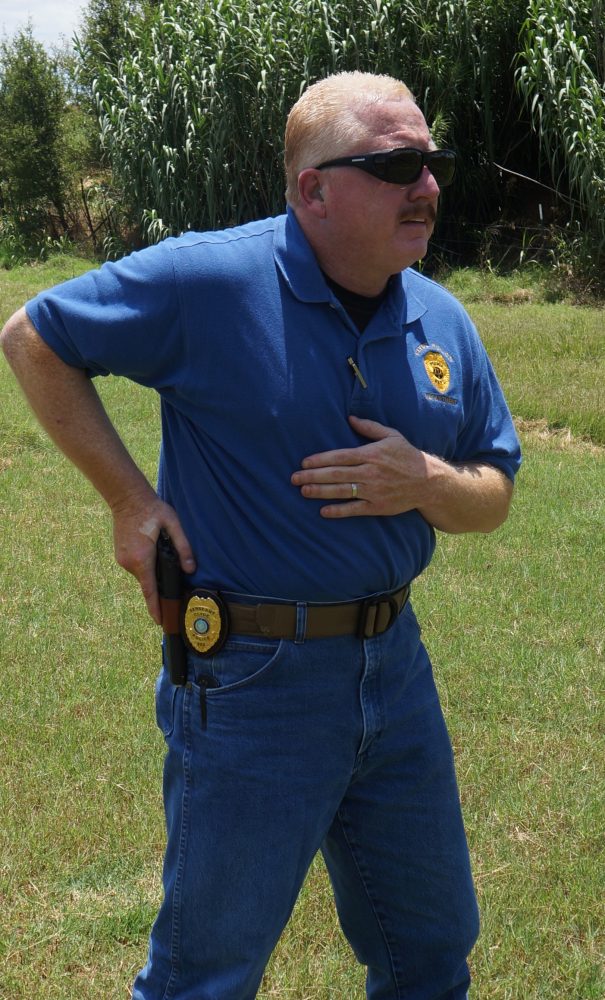
If you are a concealed weapon permit holder, I hope you have seen the need for additional training beyond the minimal licensing course and have pursued it. Dozens of high-quality defensive firearms academies exist nationwide. You are limited only by your own motivation and pocketbook. If you can make it to Gunsite or Thunder Ranch, great, but numerous other programs are available that may benefit you more both financially and geographically.
As a career police officer and tactical trainer, I have been instructed by firearm gurus such as Clint Smith and Mike Witzgall. If you can get that type of high-quality tutelage, you will be glad you did, but other well-versed instructors of defensive weaponcraft also have much to teach you.
Table of Contents
MAKING THE COMMITMENT
You have secured professional training and have a certificate, a pistol and contagious enthusiasm about your newly attained skill sets. Now what?
Unfortunately, most in your position feel they have conquered the beast and are ready to take on all comers, and then time and reality creep up on you, life happens, and skill begins to diminish.
Whether cop or Joe Good Citizen, your work has just begun. You now must commit to monthly or bi-monthly practice sessions, where at the very least you continue running through what you have learned thus far. I actually denote it on the calendar just as I would a doctor’s appointment or child’s birthday. Get serious about it and set aside the time and ammo expense to get it done.
I believe in teaching by example, so what follows is the handgun regimen I have ritualized. It is not all-inclusive and can be modified depending on your own ability and range restrictions.
If you are limited to an indoor range or a public place where certain moves and maneuvers are disallowed, the presentations (drawstrokes) and other procedures can easily be practiced at home with dry-fire exercises. Never underestimate the immense value of dry-fire practice, which can be confirmed later through live-fire drills.
I am fortunate to have access to a private police range, where I am limited only by certain unavailable resources and my own feeble imagination.
Here in the real world, few of us have access to automated moving targets and unlimited pepper poppers. But simplicity can be your friend if you nurture the relationship.
DRILLS
Start with 100 rounds of your chosen ammo. Ten stages, a total of ten rounds per stage with five rounds in two separate magazines forcing a slide-lock reload each stage to build on “muscle memory” with repetition.
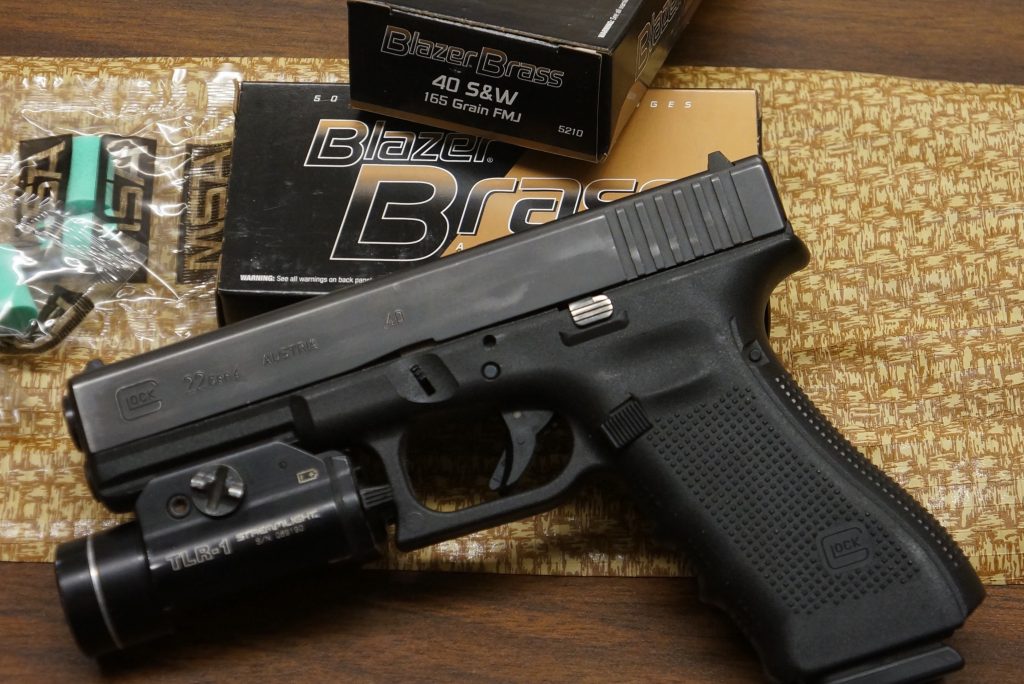
At 15 yards, begin with a slow-fire accuracy-motivated ten-round drill.
Concentrate on the basics to insure you are crawling before you walk, and walking before you run.
Stance, grip, sight alignment, and trigger control. Sounds like second-grade stuff, but without continuing practice of the fundamentals, your foundation will not support whatever you seek to build.
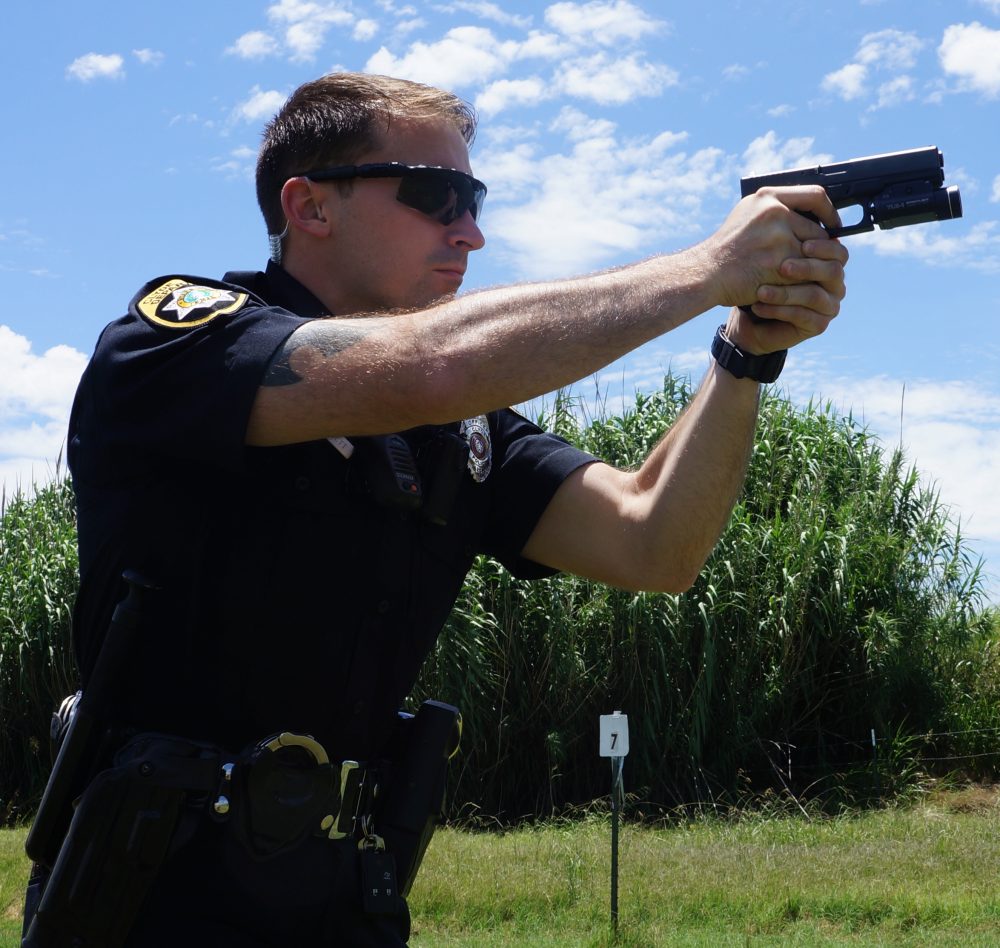
Fire five rounds, perform an emergency reload and repeat. Holster a safe weapon and examine your work. If content with the results, graduate to the next step.
At seven yards with a holstered hot weapon, begin in a casual stance with your hands in front of you at about waist level, as though are observing a football game or conversing in public with a friend.
This time you are working on your drawstroke and two round hammers to the upper torso of the bad guy. With your learned no-wasted-movement presentation, obtain a flash sight picture and press off your shots. Reload and repeat. Scan your environment and if all is well, reverse your draw and slowly secure the pistol into your holster.
Repeat.
Magazines are now empty, with only a round in the chamber. Fire the round, conduct a speed reload while keeping eyes on the potential threat, extend, and repeat.
Still at seven yards with a loaded, holstered weapon, continue with a failure-to-stop drill. Present, find the front sight, and press off two hammers to the chest then fire an additional round to the brainpan. Repeat with one to the chest and one to the head. Holster and repeat.
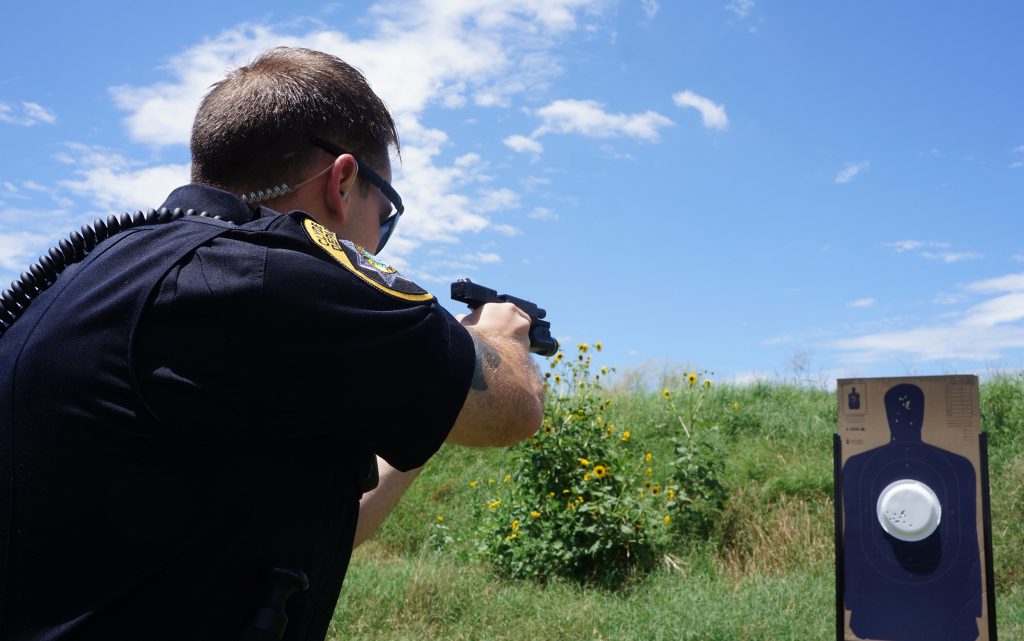
When the gun runs dry, reload and safely transfer the weapon to your support hand. The strong hand replaces the weak in the chest/sternum region. Fire five rounds. For some people, it helps to cant the weapon slightly.
During some of these drills, I occasionally perform a tactical reload to maintain proficiency at that skill as well.
In another ten-round drill, face the target at arm’s length range. Pull the support hand in tight, present into a retention position with the pistol’s slide canted to clear any potential clothing interference, and fire one round focusing wholly on the threat.
Take one step back to create space and fire the four remaining rounds into the torso, head, or a combination of the two, attempting to eliminate the threat with vascular as well as central-nervous-system hits.
Reload and repeat once more.
With the appropriate skill level, you can move on to moving and shooting. This is best done with a shooting partner on the range with you for safety, and it’s something you should have previously learned in your basic shooting school. Use the “Groucho” walk, heel-to-toe to reduce sight bobble.
I usually start at 15 yards and do an aggressive “approach the threat” drill. Press off your shots as your front sight comes on target. Once again strive for a consistent cadence of fire. When you hit slide lock, dump your empty mag, reload, and reverse the procedure.
Next proceed to a lateral walking drill. This requires you to employ a side-to-side shuffle while turning your upper torso slightly to properly address your rounds to the target.
Finish up your string of fire with a repeat of the initial ten-round slow-fire drill at 15 yards, once again reinforcing those all-important fundamentals.
Throughout the entire practice, strive for combat accuracy: being able to deliver shots rapidly into an eight-inch circle. You can staple a paper plate in the center of the silhouette and utilize this as a standard for desired marksmanship. If the majority of your rounds are on the plate throughout the described drills, you are maintaining an acceptable degree of accuracy.
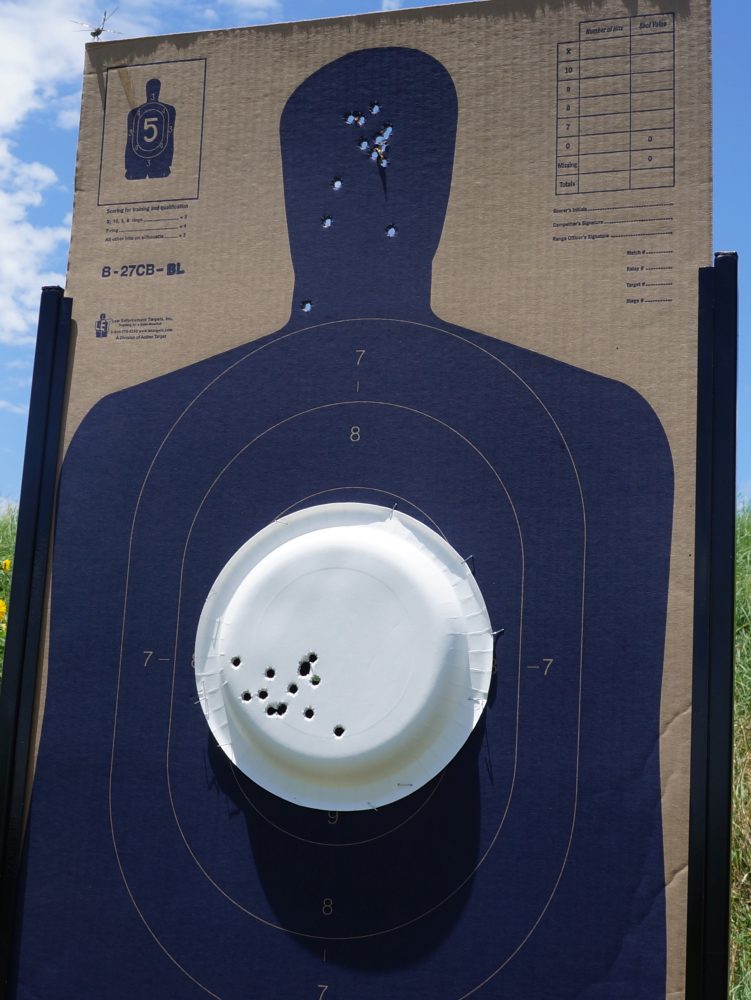
LIFE LESSONS
Many moons ago, I was employed as a deputy sheriff in far west Texas. This department had a staff of ten sworn officers and was oil-money rich. The pay was above average and the benefits were phenomenal—all in order to attract and retain quality peace officers in that rural area.
We had a nice range just north of the county seat and tons of lonely ammunition in our armory. I was the firearms instructor and, following our first annual firearms qualification, I was, to say the least, disappointed and perplexed. Everyone was able to qualify by the skin of their teeth, but their weapon manipulation skills were atrocious. Shortly thereafter, I put on one of my tactical handgun classes for our department and other nearby agencies.
I approached the Sheriff and obtained approval to allow every officer two hours of overtime per month for continued firearms training, and I would be available to give guidance and supervise each deputy at their own designated time.
They had a free range, all the free ammo they wanted to shoot, and they would be paid approximately $75 per month for what they should be doing anyway. Guess who took advantage of this outstanding opportunity? Nobody. But as I made my regular trips to the range, I’d frequently pass some deputies going the other way, headed to the golf course.
BEYOND THE MINIMUM
In a perfect world, we would all have an ever-present personal firearms trainer dictating drills, correcting errors, and offering guidance. But since you don’t live in that perfect world, you must become self-disciplined enough to run yourself through appropriate and realistic drills and do so on a regular basis.
Furthermore, anyone can find the time for a few minutes a day for dry fire practice. It has been proven by top shooters that dry fire pays big dividends on the range.
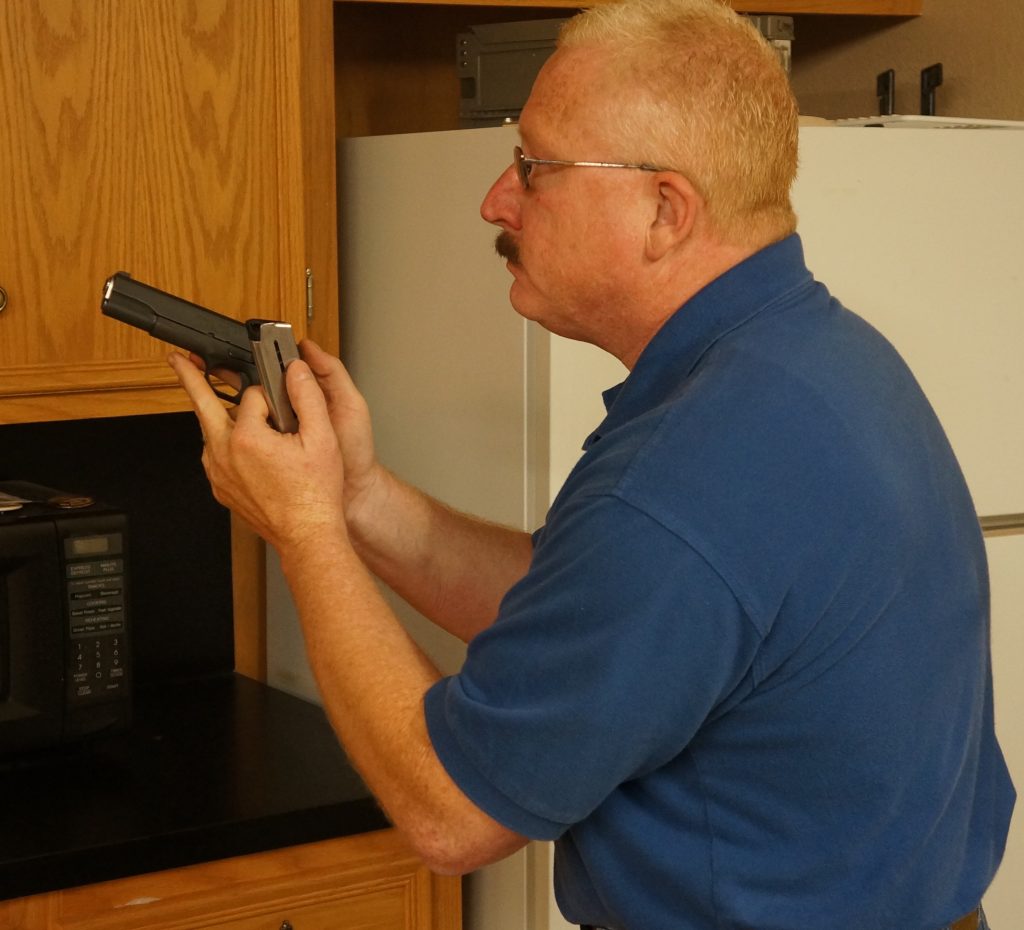
The described drills are merely a framework, a recipe you can add ingredients to or take them away from. One hundred rounds per month should be a minimum.
Fifty dollars or less per month on a life-insurance policy that is too important to ever let lapse is a bargain!

